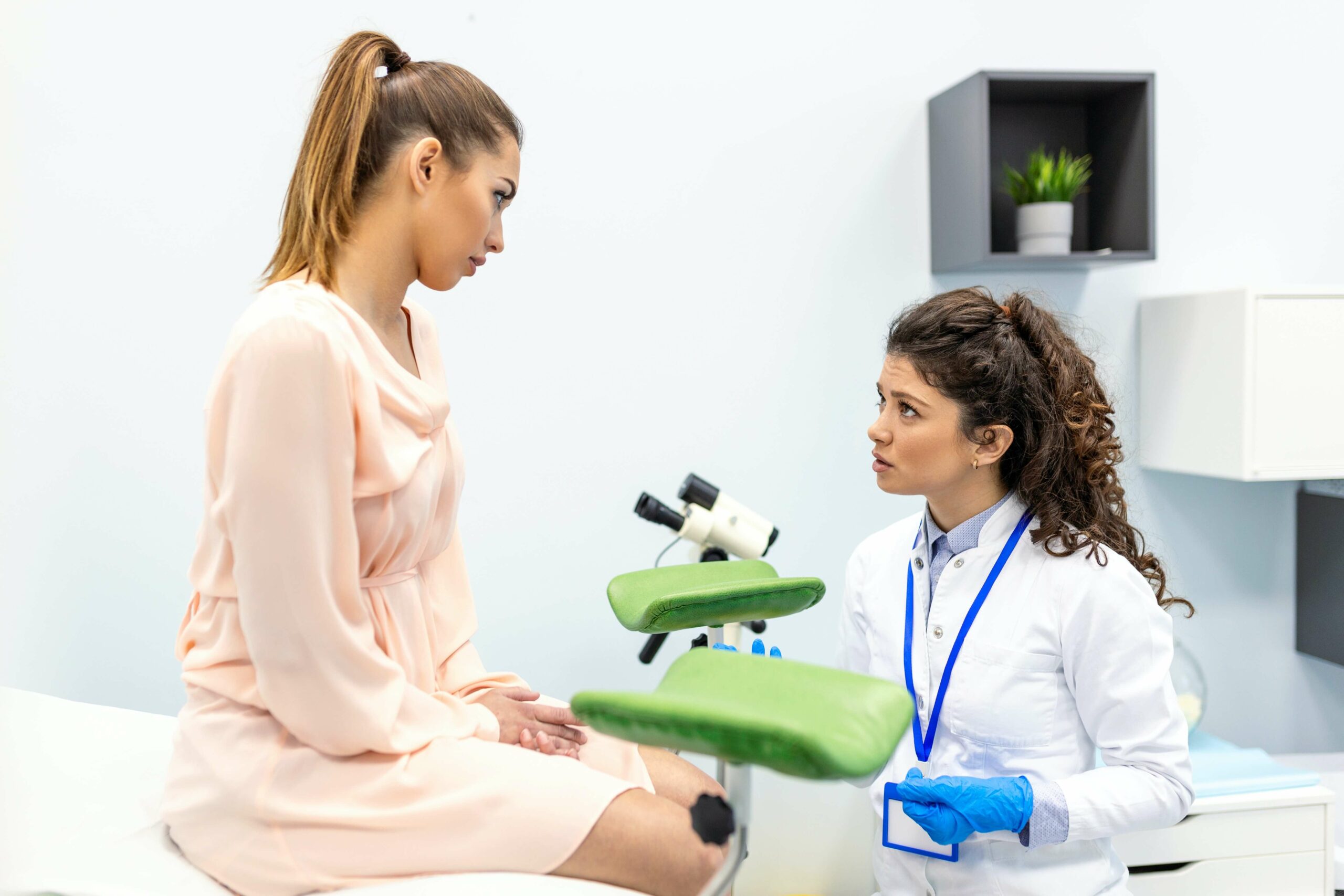Adenomyosis occurs when the endometrial tissue (inner lining of the uterus) grows into the muscular wall of the uterus. This can cause painful menstrual cycles accompanied by a heavy flow. The cause of adenomyosis is still idiopathic (unknown), but some studies have shown that it does get better after menopause, another option is to remove the uterus completely (hysterectomy).
Symptoms of Adenomyosis
Some women might not realise they have adenomyosis as they will only experience mild symptoms. But other women might have painful menstrual cycles, accompanied by a heavy and prolonged flow. They might also have chronic pelvic pain and experience pain while having sexual intercourse (dyspareunia).
Causes of Adenomyosis
The cause of adenomyosis is still idiopathic (unknown). However, some studies have theories of what might cause adenomyosis.
Invasive Tissue Growth
Some healthcare providers think that it is endometrial cells that invade the muscle wall of the uterus and start to grow there. Uterine incisions such as a c-section while giving birth can increase the invasion of endometrial cells into the wall of the uterus.
Developmental Origins
Some experts believe that the endometrial cells are deposited into the muscle wall of the uterus when the uterus is first formed in the foetus.
Uterine Inflammation Related to Childbirth
Other theories suggest that there is a link between adenomyosis and childbirth.
Stem Cell Origins
Some theories propose that bone marrow stem cells might invade the uterine muscle which then leads to adenomyosis.
Can Adenomyosis Cause Infertility?
Researchers have discovered a link between adenomyosis and infertility. Adenomyosis affects the uterotubal junction transport and alters endometrial function and receptivity. Other studies reported that women with adenomyosis had poor reproductive outcomes compared to women without adenomyosis.
Can I Preserve Fertility with Adenomyosis?
High-intensity focused ultrasound (HIFU) is recommended for women who want to preserve fertility while having adenomyosis. This procedure has the advantages of no operation, no bleeding, no ionising radiation, and repeatability. This is a localised focused treatment and preserves the integrity of the uterus. It is recommended for suitable patients who have the desire to conserve the uterus and have children in the future.
What are The Disadvantages of Adenomyosis?
If adenomyosis is left untreated it can cause infertility and increase your chances of having a miscarriage during your pregnancy. The reason for this is adenomyosis makes it difficult for the embryo to implant in the uterus.
Can I Carry a Baby with Adenomyosis?
Research has shown that adenomyosis in pregnancies can mimic myometrial and placental abnormalities. Adenomyosis is also associated with poor pregnancy outcomes. The reason for this is spontaneous abortion (miscarriage), preterm birth, and foetal growth restrictions.
Treatment for Adenomyosis
Every woman will experience different symptoms, which means that every woman will need to be treated differently according to her needs. There are different options to treat adenomyosis such as anti-inflammatory medication to help with inflammation and pain. Treatment during your period can also be given to help reduce the amount of blood loss, adenomyosis is known to be accompanied by heavy flow periods. Hormone therapy such as contraception can be taken to help control heavy and painful periods.
What is The Best Treatment for Adenomyosis to Get Pregnant?
Should you want to conceive a child while having adenomyosis it is advisable that you receive early combined gonadotrophin-releasing hormone agonists (GnRHa) therapy followed by cytoreductive surgery immediately after that. It is also advised to delay falling pregnant for four to six months after the procedure.


 71–75 Shelton Street, Covent Garden, London, WC2H 9JQ
71–75 Shelton Street, Covent Garden, London, WC2H 9JQ +44 (0) 20 3376 1032
+44 (0) 20 3376 1032



